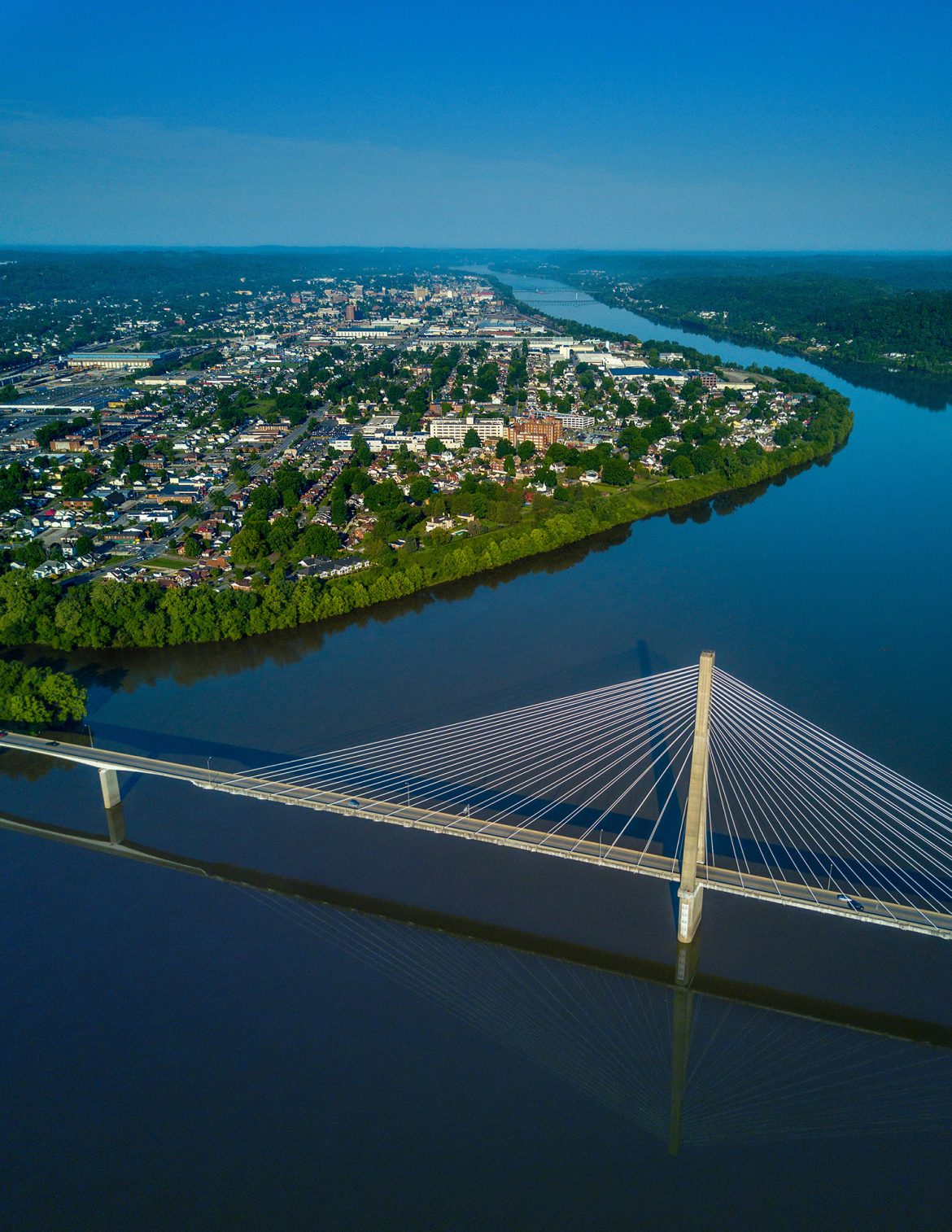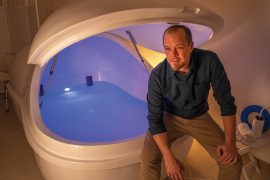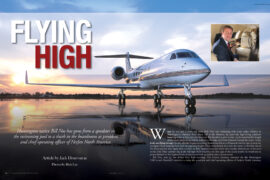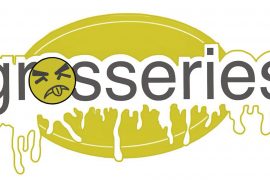A look at what’s to come for “America’s Best Community”
By Katherine Pyles
HQ 98 | SUMMER 2017
The naming of Huntington as America’s Best Community in April might have come as a surprise to some, but not to the members of the ABC leadership team.
Mayor Steve Williams says he knew a win was in the city’s future the moment representatives from Frontier Communications described the economic revitalization competition to him.
For consultant and former city manager Margaret Mary Layne, it began to sink in when Clint McElroy, writer and director of Collis P.: A New Musical, called to offer a free performance, with all donations going toward the revitalization efforts, an unprompted show of support.
If you ask Coalfield Development Corporation CEO Brandon Dennison, the revitalization plan itself is what secured Huntington’s spot at the top.
“It’s a rock-solid plan, and it’s aspirational. But it’s also achievable,” Dennison says.
Mary Witten Wiseman, president of Foundation for the Tri-State Community, says she realized Huntington was a likely winner during the ABC semifinals in Durham, North Carolina, where 352 communities had been narrowed to just 15.
“We kept hearing through the grapevine that Huntington was the team to beat,” Witten Wiseman says. “All anyone could talk about in Durham was Huntington’s plan and the mayor’s speech. When he said the quote, ‘Make no little plans; they have no magic to stir men’s blood,’ you could just see it on the judges’ faces. He knocked it out of the park.”
The competition, sponsored by Frontier Communications, DISH Network, CoBank and The Weather Channel, was a three-year campaign that challenged small towns and cities throughout the country to develop innovative ideas for economic revitalization. Each of the 352 participating communities was required to develop a revitalization plan, judged by a panel of economists, business leaders and philanthropists, and the winning communities were awarded various sums of money to go toward their plans.

As the first-place community, Huntington received $3 million, in addition to $100,000 in seed money as a semifinalist and $50,000 as a quarterfinalist, all of which will go toward the Huntington Innovation Project (HIP) plan. Foundation for the Tri-State Community, a nonprofit community foundation, manages the funds, while task forces throughout Huntington work in the HIP plan’s four project areas:
- The Highlawn Brownfields Innovation Zone, which will redevelop vacant industrial buildings along the Ohio River and provide a home to Rubberlite Inc.’s Polymer Technology Center.
- The Fairfield Innovation Corridor, which will develop upgraded street design and replace dilapidated housing with residential and commercial redevelopment along Hal Greer Blvd., as well as create arts and sports/health districts in surrounding neighborhoods.
- The West End River-to-Rail Revitalization, which will focus on improving the West End and Central City, starting with the new West Edge Factory.
- Gigabit City, which will connect all of Huntington with high-speed broadband.
“Most of the other groups in the competition chose just one project that they felt would spark revitalization in their city or town,” Layne says. “We took a more holistic approach. In medicine, you approach an individual’s health by looking at the whole person. It’s the same way you should approach the health of a neighborhood, of a city and of an entire region. You can’t just go after one part of the problem.”
Although the four key projects in the HIP plan address different needs in different areas of Huntington, there’s a common theme among them.
“They’re all based in neighborhoods,” Layne explains. “They’re all about creating jobs. They’re all about recognizing who we are as a people and using our property and resources in ways they’ve never been used before.”
A Culture of Expectation
Much of the work is already underway, and a key component of the HIP plan has been leveraging resources to move the four key initiatives forward, Williams says.
With seed money of just $150,000, Huntington’s task forces were able to leverage over $12.7 million from federal grants, public foundations, private foundations and local donors. Now, Williams says, a “culture of expectation” has been established that will continue to multiply not only funds but also engagement, energy and support.
“We’re going to use this $3 million to attract $260 million or more,” Williams asserts. “The $3 million is a lot of money, and it’s coming in at the right time and in the right amount to help us move forward. But eventually the money will be spent, and the trophies will be tarnished. What we’re doing is transforming our region for the next 50 years.”
Whether the city had won the competition or not, Williams says, there was no turning back on Huntington’s revitalization.
“We knew we were coming back from the finals with a full agenda in front of us,” Williams says. “We just happened to come back with a few extra dollars in our pocket.”

A Community Effort
Wiseman says the most rewarding part of the ABC process has been seeing philanthropy at work throughout the city.
“For the quarterfinals, we were required to raise $15,000 locally,” Wiseman recalls. “We actually exceeded that, but we kept running into problems with the reporting. We ended up having to Xerox our deposit books for the judges. We found out later that we were the only community out of 50 to raise the money from multiple sources; all of the others received a single check from their mayor, Chamber of Commerce or some other economic development group. Our money came from 25 or more local donors, plus all those who attended the Collis P. performance. From the first, philanthropy and community support are what set us apart in this competition.”
Wiseman says the ABC campaign has helped bring recognition to Huntington’s numerous philanthropic initiatives, from Huntington in Bloom, a local volunteer organization focused on the beautification of downtown, to the anonymous donors who’ve contributed hundreds of thousands of dollars to tear down dilapidated buildings. It’s also incorporated the creativity and talent of local folks like architect Phoebe Patton Randolph, who surveyed every structure from Fairfield West to Fairfield East to help determine the best course of action as redevelopment begins in the neighborhood. Even recent Huntington High School graduate Chip Sweeney pitched in, creating a Celebrity Bingo event that raised nearly $30,000 for a multi-sport facility in Fairfield West.
“There are people all over this community saying, ‘This is my part of the world, and I’m going to take care of it,’” Wiseman says. “They’re writing checks big and small for the things they care about. They’re giving time, money and energy to eliminate the forces in our city that are negative and bring in forces that are positive. Beyond the $3 million we won in the competition, beyond the huge grants and investments and other resources we’ve secured, there are individuals who are working all throughout Huntington to make a difference on their own.”
The Other Side of the Street
While the “America’s Best Community” honor represents “the sunny side of the street,” Williams says, there’s a dark side of the street as well. In a city plagued for years by obesity and a drug epidemic, some might question the ABC results.
“The ‘America’s Best Community’ label, as wonderful as it is, doesn’t fully represent the competition,” Williams explains. “The competition asked every community to create a revitalization plan. Well, think about what the word ‘revitalization’ means. You don’t need to revitalize a community where everything is perfect, where there are no problems. That’s called utopia, and it doesn’t exist.”
Interestingly, at the same time Huntington was coming up with a plan and creating partnerships for the ABC competition, the city was doing the exact same thing for the opiate epidemic, Williams says.
“What we’ve seen in our city over the past three years, and what the ABC judges saw in our plan, is that collaboration leads to partnerships and partnerships lead to hope,” Williams says. “And once you have those things, you can begin to act. Our community should stand unbelievably proud, not because we won the ABC competition, but because of the way we approached the ABC competition. What we’ve done, both on the sunny side of the street and in the dark shadows, has set an example for the entire nation. We’ve shown the nation that this is how a community comes together to address things.”
Dennison, who is helping lead the West End River-to-Rail Revitalization initiative, says Huntingtonians should take ownership of the “America’s Best Community” title, giving serious thought to what truly makes a great community.
“Is a great community an affluent, clean, superficial place that’s made up in a sitcom?” Dennison questions. “Or is a great community a place that acknowledges its challenges, but doesn’t just sit around and complain about them, choosing instead to come together and meet them head on?”
Williams says almost every other community in the competition was in the midst of some type of crisis – from a recent natural disaster in one city to an exodus of young people in another. But one lesson learned throughout the competition is that if you can be good in a small town, you can be great anywhere, he explains.
“In a small community, you don’t have all the resources of a large city,” Williams says. “You don’t have the economy of scale. You have to depend on your own ingenuity and on each other. But that’s the fabric under which our nation was built, and that’s where I think we have a really strong message to send to the rest of the country.”
Apples and Oranges
Dennison notes the HIP plan doesn’t represent a total transformation of the city.
“We’re not trying to turn an apple into an orange,” Dennison says. “We have so many strengths in our heritage — our work ethic, our connection to place, our sense of community, our family values — and we should never throw those things out the window. But if we want to compete in a global economy, if we want to stay here and be able to raise our children here, we need to build upon and add to those strengths.”
Williams compares the multifaceted HIP plan to one of his childhood memories: the time he sent a baseball through his parents’ picture window right after being told not to play ball in the front yard.
“Part of my punishment was working around the house to pay for the replacement of the window,” Williams recalls. “But a couple of weeks in, I decided the broken window wasn’t entirely my fault. After all, if my parents had a paned window instead of a picture window, the ball would’ve just knocked out one pane and I would’ve already been done with the work. My mom didn’t buy my reasoning, but it’s a valuable lesson for us today. What we’re doing with the HIP plan is creating diversification in our economy. Our economy isn’t just energy oriented. It’s research and development oriented. It’s technology oriented. It’s health care oriented. And if something ever comes crashing through, everything’s not going to come shattering down with it. It’s only going to take out one windowpane.”

What’s to Come
For a look at what’s to come for America’s Best Community, simply look at what has already happened in the West End. In 2014, the old Corbin factory, dormant since the late 1990s, was a hub of drug activity, vandalism and prostitution. It was scheduled for demolition until Brandon Dennison and his crews at Coalfield Development Corporation saw the building’s true potential.
Renamed West Edge Factory, the 93,000-square-foot warehouse is now home to Coalfield’s nationally recognized social enterprise program, providing jobs, training and mentorship to out-of-work coal miners and others throughout southern West Virginia. West Edge is the hub for the nonprofit’s sustainable agriculture, solar technology, mine land reclamation, woodworking and artisanship programs. It’s also a pillar of the HIP plan.
“We were working at West Edge before the ABC competition began, but we were doing it on a shoestring,” Dennison says. “The ABC campaign has allowed us to take our dreams for this place and turn them into a tangible reality. That’s the powerful reality of the HIP plan — people throughout Huntington were getting things done on a shoestring, without a lot of resources. And if Huntington can get so much done with so little, think of what we’ll be able to do with more resources.”
The answer to that? A lot, according to Williams.
“The next five to 10 years are going to be unbelievably busy,” Williams says. “Development is going to become the norm in Huntington, rather than the exception. This community is long overdue to experience that.”
Layne couldn’t agree more.
“But, it’s going to take a little faith — from all of us — to see it through,” Layne asserts. “My hope is that every person in Huntington will believe that we can be what the HIP plan says we can be. Belief is a very powerful force, and it’s what will carry this through. When an entire community believes in something, you can’t do anything but succeed.”
For more details about the HIP plan and the four project areas, visit www.cityofhuntington.com/assets/flipbooks/hip/files/?page=1
America’s Best Community Competition At a Glance
- The ABC competition was sponsored by Frontier Communications, The Weather Channel, DISH Network and CoBank. The goal was to inspire small cities to develop innovative ideas for economic revitalization.
- 352 small cities within Frontier’s service area entered the competition.
- Participating communities created detailed plans that would spark economic revitalization.
- Huntington received $100,000 for being named one of the eight finalists in April 2016. Huntington has since secured and leveraged more than $12.7 million in state, federal, philanthropic and corporate funds to move their economic revitalization plans forward.
- The eight finalists presented their community revitalization plans in Denver, Colorado. The Huntington Innovation Project (HIP) plan won first place and a grand prize of $3 million.
- The HIP plan focuses on four areas:
1) The Highlawn Brownfields Innovation Zone;
2) The Fairfield Innovation Corridor;
3) The West End River-to-Rail Revitalization;
4) The Gigabit City initiative to bring high-speed broadband to Huntington.
- All the prize money and community donations are maintained by Foundation for the Tri-State Community, a nonprofit community foundation. Huntington will use the winnings to advance the HIP plan.





